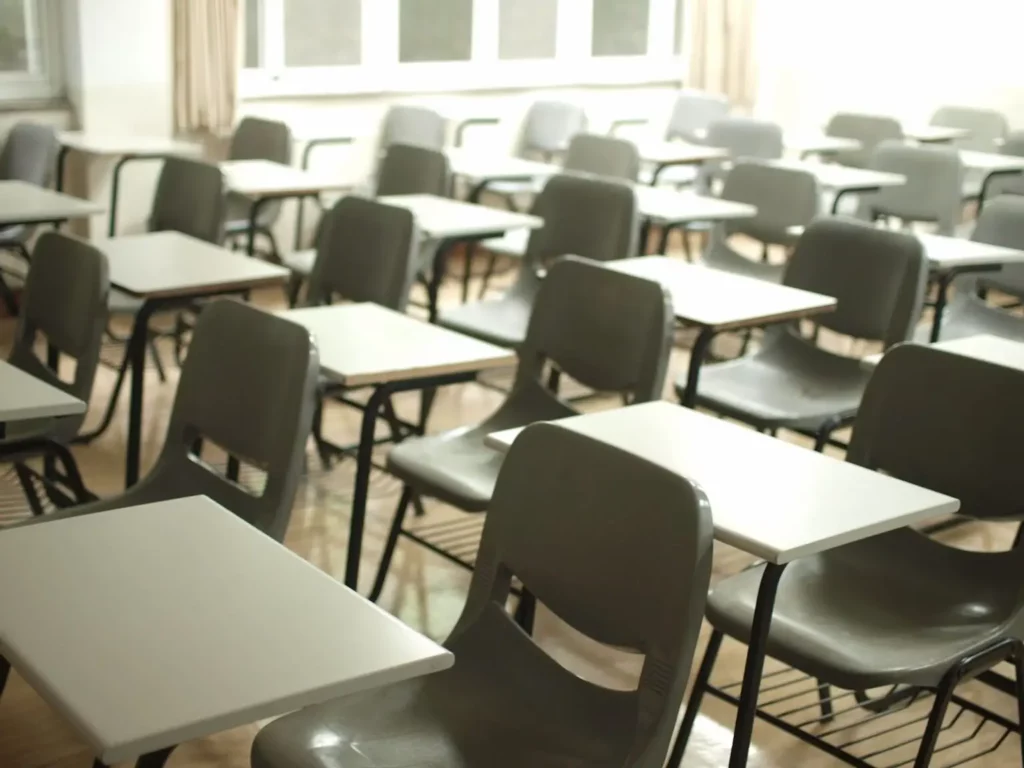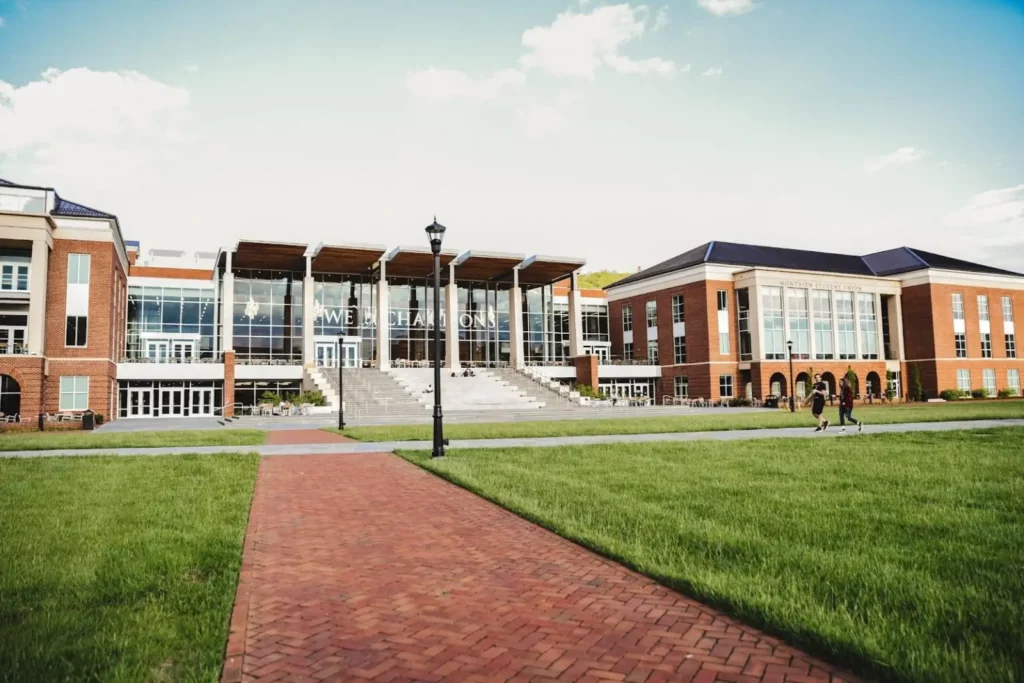Written By: Brad Campbell | August 14, 2023
In the tragic event that an active shooting unfolds on school grounds, something that is all too common these days, it’s important to have the proper training and security measures in place to minimize harm and protect lives.
Preparation and knowing what to do in the event of an active threat scenario go a long way towards mitigating the threat, but you also need physical barriers in place to deny the shooter access to certain areas, such as classrooms.
This is where knowing how to secure school doors comes into play. A properly secured classroom door can provide a safe space for students and teachers to hide and barricade themselves in while they wait for the police or FBI to arrive and neutralize the threat.

Before we dive into what specific steps you can take to secure school doors against active threats, both before and during an attack, let’s take a look at the recommended protocol for active threat scenarios. This will give you a better idea of how doors can come into play during active threats.
According to the FBI, there are three things staff and students should do when there is an active threat on a school campus:
If you hear shots on campus or see someone with a gun approaching, the first thing to do is run to safety. Try to either evacuate the building and run away or get to somewhere safe in another part of the building, as far away from the shooter as possible.

If you are unable to escape the school, the next best thing to do is hide somewhere safe, preferably barricading yourself inside a classroom or another secure area where the shooter won’t be able to get to you.
As a last resort, if you are unable to run and/or hide, fight the shooter and do anything you physically can to disarm or disable them to protect your life and the lives of others. This could include throwing things at them, hitting them with objects, or attacking them using your body.
The first thing to do when preparing to secure school entry doors, classroom doors, and other campus doors does a thorough inspection of them all.
Determining how all the different doors close and lock, inspect the state of existing locks and take note of which doors have vulnerable glass panels in them. All of this information will give you a better idea of what physical security upgrades you need to make to doors.
To better assist you with this process, consider conducting a professional school threat assessment with a security expert. These assessments examine all your existing security measures, identify vulnerabilities, and provide school security upgrade recommendations.

If any doors have weak locks, such as push-button handle locks, install more secure locks, such as deadbolts that lock from the inside.
If there are any doors that you have to lock from the outside with a key, switch the locks to a version that locks from the inside.
Access control systems are an important part of a layered school security system. They ensure that only authorized students and staff have access to the building, thus mitigating the risk of an active threat not attending or working at the school gaining access to the campus.
Consider an access control point that requires staff and students to scan an identity card or enter a code to pass through the doors and enter the school.
These school entrances should also be staffed, so the assigned employees can watch out for suspicious activity, such as unknown individuals trying to gain access to the building.

According to ALICE, a top active threat training solution and preparedness education program for schools and other organizations in the US, classrooms should be arranged in a way that allows them to be barricaded quickly in the event of an active threat in the building.
You can do this by arranging heavy furniture, such as filing cabinets, tables, shelves, and other objects near the door. In the event of an active threat scenario, the teacher and/or students can quickly move these objects in front of the door to help deny access to a shooter.

Locks, access control systems, and barricades all provide some level of forced entry protection, but any glass panels in school doors are still incredibly vulnerable.
An active threat can shoot out or otherwise break a pane of glass to reach through a door and unlock it, push barricading objects out of the way, and gain access to a classroom and those inside.
This threat can be mitigated by retrofitting door glass with ballistic-grade glazing shields, ideally made of polycarbonate or a combination of polycarbonate and laminated security glass.
Though nothing is 100% bulletproof, this type of door security glazing can stop one or more bullets from penetrating the window behind. This gives people on the other side time to get down and take cover out of the line of fire if an active threat is trying to shoot through the door.
But the most important thing that ballistic glazing shields do is remain a barrier to forced entry, even when riddled with bullets. Whether or not a shooter is able to penetrate the glass with rounds, they won’t be able to break it or reach through it to unlock the door and gain entry.
When it comes to retrofitting school doors with secure forced entry- and bullet-resistant glazing, there’s no better option than Riot Glass.
Riot Glass security glazing units for school doors create a robust barrier against forced entry and protect students, faculty, and other building occupants from potential acts of violence.
Constructed with a combination of highly impact-resistant polycarbonates, acrylics, and other plastics, along with specialized security door framing systems, these door glazing units are designed to withstand even the most determined attacks.
One of the primary benefits of Riot Glass security doors is their deterrent effect on potential active threats.
Although these doors act as virtually invisible access denial barriers, it quickly becomes obvious to attackers that they are fortified as attempts to smash or shoot through them are met with frustration.
This indicates to the would-be intruders that the school is well prepared and serious about security. The presence of these Riot Glass doors can dissuade individuals from continuing to attempt unauthorized entry attempts, reducing the likelihood of harm to those inside.
By implementing Riot Glass security doors, schools proactively establish a secure environment that discourages external threats, promoting a sense of safety and peace of mind for everyone within the premises.
Riot Glass security doors for schools offer a wide range of customization options to suit the unique needs of each educational institution. Schools can choose from various styles, sizes, and finishes to seamlessly integrate these doors into their existing architecture.
Whether it's for the primary entrance, classrooms, administrative areas, or other vulnerable points, Riot Glass doors can be installed to create a comprehensive security system tailored to the school's specific design and functionality requirements. Even all-glass doors can be replaced using Riot Glass AG Series doors.
This versatility ensures that security measures can be implemented effectively without compromising the aesthetic appeal of the campus.
Right from the beginning, investing in Riot Glass security doors can provide long-term cost savings for schools.
Since in many cases security glazing infills can be retrofitted into or onto existing school door framing systems using retrofittable framing adapters, installation is much more affordable (not to mention less disruptive) than replacing the school doors altogether.
These doors are designed to withstand extensive wear and tear, requiring minimal maintenance over their lifespan. The specific formulations of polycarbonates, acrylics, and other plastics that Riot Glass school doors are composed of ensure they outperform and outlast similar products on the market.
Additionally, their durability minimizes the need for frequent replacements due to breakage or vandalism.
Riot Glass doors can even improve a school’s energy-efficiency, as security glazing can be included as part of insulated glass units (IGUs) that help regulate temperature and reduce heating and cooling costs.
To sum up, Riot Glass security doors offer an effective, durable, and affordable solution for enhancing school safety and security.
Riot Glass security glazing provides a robust physical barrier against intruders, while maintaining a welcoming and open learning environment — it fortifies schools without making them look fortified.
With their exceptional strength, customization options, and cost effectiveness, Riot Glass doors are an essential component of comprehensive security measures for educational institutions, helping to ensure the safety and well-being of students, staff, and visitors.
Final Words
Doors are not the only important aspect of a comprehensive school security system, but it’s vital for educators to know how a school’s doors can be secured to prepare for and protect against an active threat.
Contact Riot Glass today for more information about our school door security glazing retrofits or to schedule a school threat assessment with one of our security experts.

HOW CAN WE HELP YOU?
